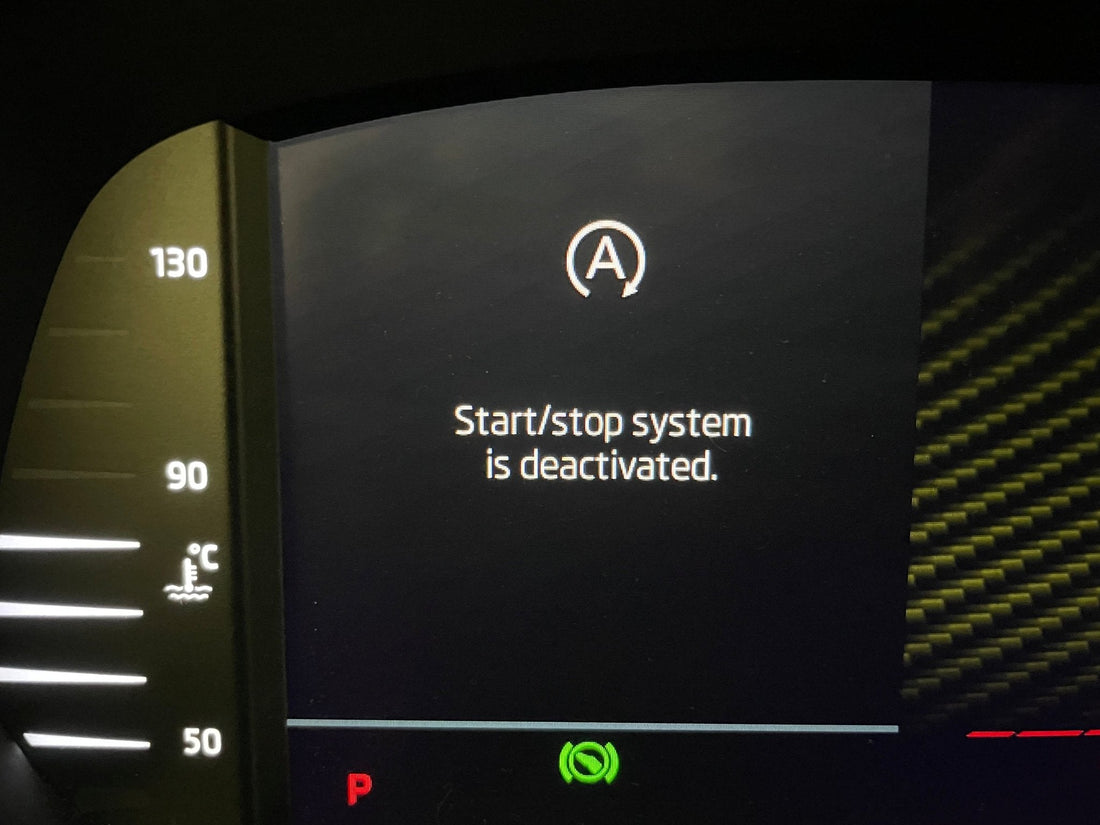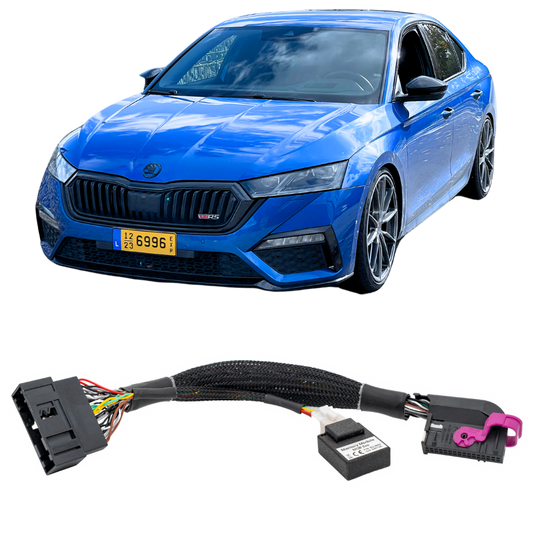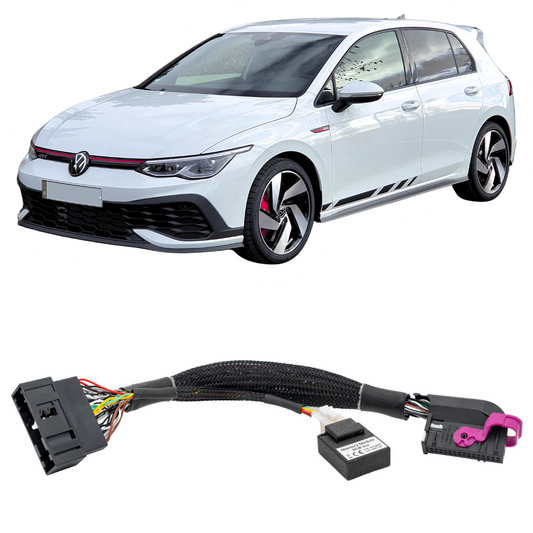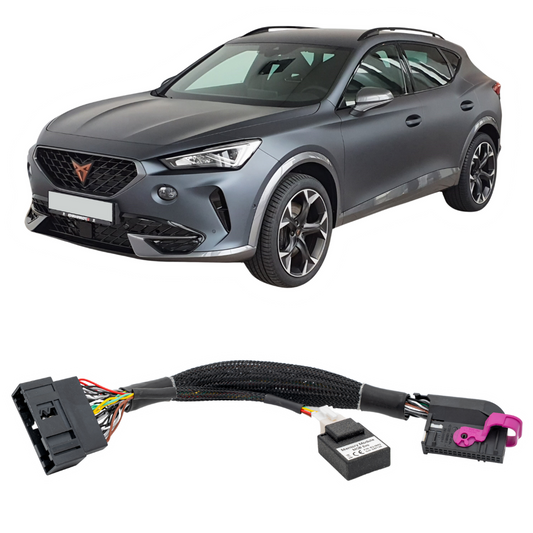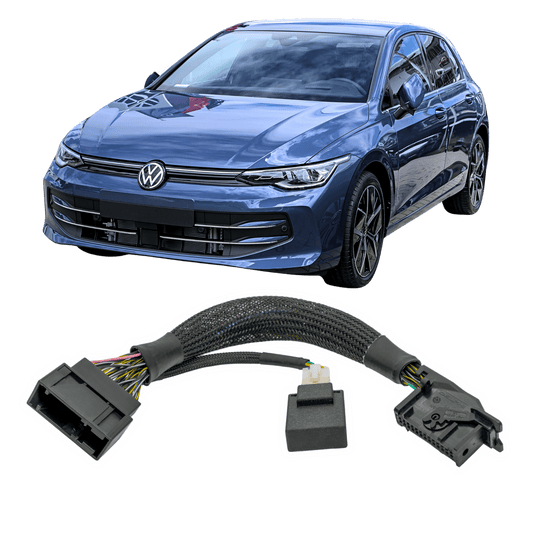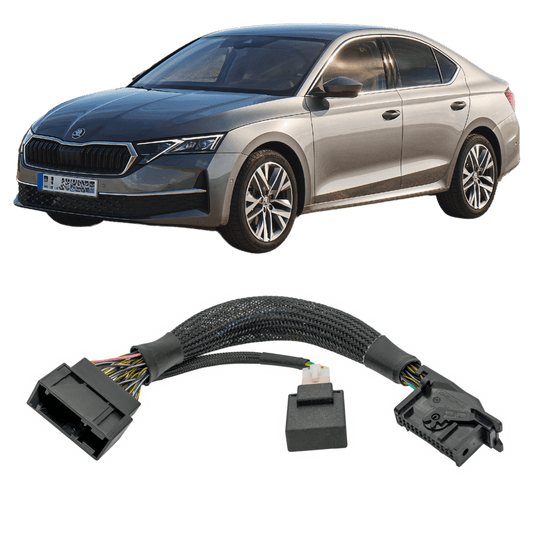Annoyed by your car's auto Start-Stop system? You are not alone! The VW Golf 8, Skoda Octavia 4, Cupra Formentor and other VW MQB Evo models all come with this feature by default - but many drivers want it gone. Whether you’re frustrated by engine wear, laggy restarts or shortened battery life, here are four proven ways to permanently disable Start-Stop.
1. Disconnecting the Battery Connector
One of the most popular ways to disable start-stop in the Octavia 4, Golf 8, Cupra Formentor (and others) is by disconnecting the connector for the voltage and current monitoring system (J367) on the battery. You'll find it near the negative pole of the battery.


Once disconnected, the control unit J367 loses information about the battery's state and condition, causing it to switch to fallback mode. In this mode, the start-stop system remains off, and the charging/recuperation profile changes. This method is the cheapest but comes with several drawbacks and risks. Apart from losing some convenience features - such as auxiliary heating, keyless entry (Kessy), and infotainment system updates - you may also expose yourself to safety risks. Quoting Pavel Jína, Škoda Auto spokesperson (translated to English):
“By disconnecting the system, the car loses information about the battery's charge capacity and condition. This results in the loss of convenience features such as auxiliary heating or infotainment software updates, and it also affects the safety of the vehicle. The combination of an old, discharged, or damaged battery and high onboard network load (air conditioning, charging external devices, using infotainment, steering electronics, assistance systems) can lead to a sudden increase in power consumption during an evasive maneuver supported by ABS and ESP. This results in a voltage drop in the onboard network and can lead to function failures and communication breakdown between control units.”
It should also be noted that this method does not work with 48V hybrid engines and, since 2022, with all other engines.
2. Deactivating Start-Stop via Coding
Disabling the start-stop system through long-coding with tools like OBD11 or VCDS is usually the most popular method. However, few people know that in the Octavia 4, Golf 8, and Cupra Formentor, the start-stop system cannot be coded off, unlike in previous generations. The only way to disable start-stop via diagnostics in these cars is to deactivate the J367 (Battery Control Module) in the central gateway - this is simply a software equivalent of disconnecting the battery connector, as described in the previous section.
It comes with the same risks and drawbacks. Also if your car is still under warranty, using this method could lead to the manufacturer denying warranty claims related to the car’s electronic systems, as they'll be able to see that the gateway has been altered from the factory settings.
Additionally this method of long-coding is newly protected by Vehicle Diagnostic Protection (also known as SFD – Schutz Fahrzeug Diagnose), so you'll need a diagnostic tool that can unlock SFD, for example OBD11 (probably best option for hobbyists). It's important to note that unlocking SFD requires communication with Volkswagen's server. This communication is logged, and the manufacturer can review it when checking if anyone has tampered with the unit.
OBD11 Procedure:
- Go to the
Gateway - 19 - Unlock SFD
- Open the long coding section
- Locate
Slave_component_list - Set
Battery Monitoring Control Moduletono
This method deactivates the J367 unit, and you'll see static error U112500 - Local data bus Additional installations detected (Subsystem_multiple_plug_identified) in the gateway module. However, no error messages should appear in the infotainment system or on the dashboard.
Same as the first method, this approach doesn't work for cars manufactured after 2022 or for hybrids
3. Deactivating Start-Stop through ECU Flashing
ECU flashing is a process where the engine control unit is reprogrammed with new - modified firmware, typically to increase performance or reduce fuel consumption. However, when modifying the firmware, it is possible to adjust not only the performance but also the behavior of the start-stop system. This is technically the most elegant method, as it does not risk problems with the onboard power supply or battery damage. The main downside is the cost and the almost certain loss of warranty on the drivetrain. We recommend choosing a reliable tuner with experience with your engine type.
4. Deactivating Start-Stop with a Memory Module
The fourth and final way to permanently disable start-stop is by using a memory module, which you plug directly into the car’s data bus. There is no need to code control units or otherwise modify the car’s software; the module acts as an independent “control unit” that monitors what is happening and reacts accordingly. When it sees that the start-stop has been turned off, it remembers it and automatically turns it off every time the ignition is turned on, just as you would. The memory module simulates user behavior at the CAN or LIN bus level, making it usually undetectable by common diagnostic tools, even retrospectively. This makes it ideal for cars under warranty or on a lease.
The module works as long as it’s plugged in. If you decide to sell the car, you can disconnect the module and sell it separately, thus recovering part of your investment. This makes them more cost-effective than custom ECU tuning. Additionally, it is practically the only non-invasive method to adjust the car’s behavior according to your preferences.
And start-stop is just the beginning; our memory modules can also adjust the behavior of all assistance systems, even driving modes! If you're annoyed that your car doesn’t remember the last set driving mode, the memory module is practically the only solution. With one purchase and one device, you can add memory for everything. As a thank you for reading this far, grab this I_READ_BLOGS_10 hidden discount code.
However, not everything that glitters is gold. Although memory modules seem like an almost perfect solution, they also come with some risks. We will detail these in another article. Choose carefully and definitely do not connect devices from unknown manufacturers to the CAN bus.
